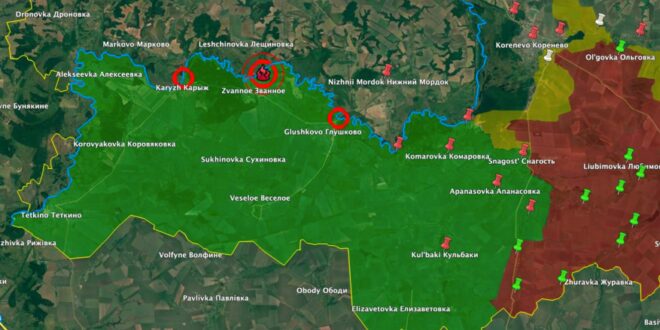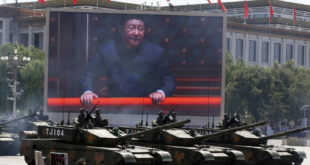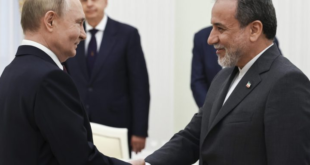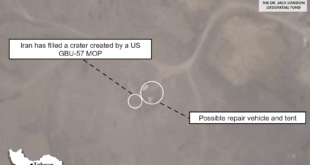The Ukrainian Armed Forces continue their offensive in the Kursk region. It is reported that the Ukrainian military blew up the third and last bridge over the Seim River, and in the captured military registration and enlistment offices they are burning folders with files on Russian draft dodgers. The operation has shown the fallacy of the idea of Russia’s war in Ukraine. Hardly anyone could have imagined that, having been on the defensive for the past year, the Ukrainian army would dare to launch a daring ground operation on enemy territory. Since 2022, the Ukrainians have been patiently waiting for military assistance from their Western partners, which has prevented them from achieving significant results on the battlefield. By taking the initiative into their own hands, Ukraine has caught not only Russia but also the United States by surprise, according to military analyst Colby Bedworth. Not only did Kiev fail to inform the White House about the upcoming operation, but it also violated the ban on the use of American weapons on enemy territory. And perhaps the occupation of internationally recognized Russian territory will force President Biden to reconsider his approach and give in to the requests of the Ukrainians.
A German Marder drives across a field in the Kursk region. Previously, such a phrase could only be found in a history textbook in the chapter on the Eastern Front of World War II. Everything changed on August 6, 2024, when the Ukrainian Armed Forces launched an operation on Russian territory that will undoubtedly also be included in future historical works. Although Ukrainian forays into enemy territory have already occurred in this war, the breakthrough into the Kursk region bears little resemblance to past operations. The Freedom of Russia Legion and the Russian Volunteer Corps , which carried out most of these raids, now seem to have had nothing to do with it.
This is a much larger offensive involving regular Ukrainian forces. The surprise attack on a quiet section of the border with Russia, capturing several hundred square kilometers of enemy territory, has generated much speculation about Ukraine’s motives. It is too early to draw conclusions about the tactics and success of the operation as a whole, but it is already clear that it has some strategic implications.
The Ukrainian army has been on the defensive for the past year, losing territory to the Russian offensive in Donbas. The Ukrainian Armed Forces are short of ammunition and personnel, and many units have been on the front lines for so long that their combat effectiveness is highly questionable. The counteroffensive in 2023 was so unsuccessful that it was impossible to imagine the Ukrainian Armed Forces attempting to regain the initiative.
The counteroffensive in 2023 was so unsuccessful that it was impossible to imagine that the Ukrainian Armed Forces would attempt to regain the initiative.
Since the start of the full-scale invasion in 2022, the terms of the war have been dictated mainly by the Russian side. Even when the strategic initiative belonged to Ukraine, the Ukrainian Armed Forces sought to retake the territory captured by the Russians. In other words, Kyiv was essentially reacting to decisions made in Russia. It was assumed that Ukraine would not be able to launch a new offensive because it was struggling to repel Russian attacks in the Donbas, and Russian fortifications on other parts of the front would not allow a successful breakthrough. However, these forecasts were based on erroneous assumptions, which also showed a lack of imagination on the part of military analysts.
While Ukraine was on guard against Russian aggression from all sides, including Belarus, and had built fortifications accordingly, Russia left much of its border relatively undefended. Russian leaders have demonstrated the same lack of imagination, or at least an inability to properly assess the risks. The scenario of Ukrainian forces launching a major ground operation on Russian territory instead of focusing on liberating their own was apparently not considered likely. Of course, hindsight is a good thing, but such an approach does not seem very wise given the past cross-border raids and regular attacks on military installations inside Russia. Ukrainian leaders have made it clear that Russia must feel the consequences of the war it has unleashed; this operation is a logical step in that campaign. Now Russian troops are forced to hastily build new fortifications on the approaches to Kursk because the border has proven insufficiently protected.
The Russian leadership has demonstrated a lack of imagination, or at least an inability to correctly assess the risks.
It is too early to draw any conclusions about the outcome of this operation, but its first results indicate that the Ukrainian command was underestimated. I myself believed that Ukraine would only be able to fully staff its existing units and form new ones by next year. Although the current operation is much smaller in scale than the 2023 counteroffensive, the fact that the Ukrainian military was able to pull together sufficient reserves from units with combat experience and simultaneously prevent a Russian breakthrough in the Donbas is impressive.
Let us recall that the tense situation is not limited to Donbass: since May, Russia has been conducting an offensive in the Kharkiv direction. The Ukrainian 82nd Airborne Assault Brigade took part in heavy fighting there, and is now leading the operation near Kursk. The deployment of this veteran brigade has borne fruit, at least at the first stage: as a source in the Ukrainian General Staff told The Economist, “Russian conscripts clashed with paratroopers and simply surrendered.”
The Kursk operation now involves probably up to a dozen different Ukrainian brigades, which is evidence of a high level of planning and logistical preparation. “We sent our most combat-ready units to the weakest point on their border,” the Economist’s source explains. Time will tell whether this was a wise decision, but at the moment the Russian breakthrough is at least 25 km deep and 40 km wide, and is growing every day.
Taken by surprise, the Russian command hastily transfers reinforcements from the Kharkov region and other quieter parts of the front to Kursk. Without going into predictions about how many forces Russia will need to repel the Ukrainian attack, we will list the obvious strategic consequences of the operation. Until now, Ukraine has been in a disadvantageous position, forced to defend its entire border not only with Russia, but also with Belarus; Russia, on the other hand, has been able to not guard its border too actively, freeing up forces for offensive operations. In the future, Russia will have to devote significantly more resources to protecting its border. And even if the Russian military manages to push Ukrainian troops back from Kursk, the threat of future large-scale invasions will remain.
Even if the Russian military manages to push Ukrainian forces back from Kursk, the threat of future large-scale invasions will remain
But the most significant consequences of the Kursk operation are not even strategic, but super-strategic . From the very beginning of the war, the Ukrainian leadership has been forced to fight not only on the battlefield, but also in the corridors of power in Western capitals. Behind them is the hard work of convincing the United States, Germany and other key partners to provide the weapons necessary to defeat the Russian invaders. The decisions to this end were made extremely slowly. Many different excuses and justifications were given as to why certain systems could not be delivered to Ukraine, but the fear of escalation remained unchanged: if Russia were driven into a dead end, a third world war could break out.
German Chancellor Scholz used the risk of escalation to justify Germany’s refusal to provide Kiev with TAURUS long-range cruise missiles . In the administration of US President Joe Biden, fear of escalation is dictating the very approach to this war. Even before the full-scale Russian invasion, the Biden administration delayed publicly announcing a military aid package for Ukraine, hoping to soften relations with Russia. At the same time, Ukraine was asking for additional weapons to deter the looming aggression. In March, the White House said that the transfer of MiG fighters from Poland and other former Eastern Bloc countries to Ukraine could lead to unnecessary escalation. The same concerns were behind the delays in the transfer of the notorious HIMARS. This story has been repeated with virtually every weapon Ukraine has requested. All deliveries were deemed too risky, even though Russia did nothing unprecedented when Western equipment eventually appeared on the battlefield.
The final line of defense in Ukraine’s fight against the Biden administration’s concerns is a ban on the use of long-range missiles transferred to it to strike strategic targets on Russian territory. This ban applies not only to American weapons, but also to British and French ones. In an interview with The Guardian, President Zelensky said that despite signals from the UK that Ukraine has the right to defend its territory at its own discretion, the Ukrainian Armed Forces cannot use Storm Shadow cruise missiles to strike Russian targets without Washington’s approval. And in a conversation with Reuters, he emphasized that Ukraine is complying with all the West’s conditions and that otherwise “the entire volume of weapons would be at risk.”
Ukrainian-made drone attacks on Russian infrastructure and military targets further underscore the absurdity of fears of escalation, but they still fail to persuade President Biden to reconsider his policy. But the occupation of internationally recognized Russian territory could be the straw that breaks the camel’s back.
According to Russian military doctrine , a nuclear response could follow “in the event of aggression against the Russian Federation using conventional weapons, when the very existence of the state is threatened.” The Kursk operation is a clear demonstration that Putin’s threats are little more than nuclear saber-rattling. The Kursk nuclear power plant is now within range of Ukrainian artillery; it’s not as if the Ukrainians have any intention of attacking it, but if that doesn’t provoke an escalation from Moscow, it’s unclear what other pretext there would be.
The Biden administration was so worried about the possibility of escalation that it didn’t seem to consider the possibility that Russia might fear the United States more than the United States fears Russia. Recall that President Biden himself warned that the use of weapons of mass destruction would be considered crossing a red line.
The Biden administration was so worried about possible escalation that it didn’t seem to consider the possibility that Russia might be more afraid of the US than the US is afraid of Russia.
The international reaction to the Kursk operation suggests that Ukraine has apparently pulled off a clever diplomatic maneuver. The first reaction from the US came from National Security Council spokesman John Kirby, who said that the Americans would “get in touch with our Ukrainian counterparts to get a little more information [about the operation].” This comment contrasted with the reaction of the EU: the European Commission issued a very strong statement in which it explicitly recognized Ukraine’s right to retaliate against Russian territory, while the chairman of the Bundestag’s Defense Committee, Markus Faber, called the operation legitimate and militarily reasonable. The difference between Kirby’s and the Europeans’ statements shows that the Ukrainian breakthrough was perceived differently on the two continents.
The next day, at a regular Pentagon press briefing, Deputy Press Secretary Sabrina Singh gave a very strange answer to a question about whether the Kursk operation was consistent with the Biden administration’s policy regarding Ukraine’s use of American weapons: “It is consistent with our policy, and we have supported Ukraine from the very beginning in its efforts to defend itself against attacks coming from abroad.”
Of course, “from the very beginning,” the U.S. did not allow Ukraine to retaliate across the border. That policy was only revised early this summer, with many restrictions still in place. Ukraine was not and is not allowed to attack with long-range weapons like ATACMS or Storm Shadow. Ukraine was only allowed to return fire or strike Russian forces that posed an immediate threat. The White House has never given Ukraine permission to use U.S. weapons to conduct large-scale ground operations inside Russia. The attack on the quiet stretch of the border in the Kursk region also violates the terms that the Ukrainian military can only return fire or strike when there is an immediate threat. The Biden administration insists that it has not changed its policy on the restrictions imposed on Ukraine and that all current Ukrainian actions are consistent with it.
Of course, it is possible that Ukraine was given more leeway than it has publicly stated, but the available evidence does not support this theory. The State Department was quick to say that the Ukrainians had not informed them of the operation in advance and that this was not unusual. The White House also confirmed that it had not received any notification from the Ukrainian side. From Ukraine’s perspective, not informing the Biden administration makes perfect sense, given the huge number of deliberate leaks of information for the purpose of managing escalation. Almost every major decision to supply Kiev with a new weapons system was disclosed in the press before it appeared on the battlefield, including such serious systems as ATACMS. The risk of early disclosure of information this time was too great: the operation could be compromised, or the Americans could demand its cancellation.
U.S. officials confirmed the above to The New York Times, reporting that they “were not formally informed of the highly risky operation, perhaps because Ukrainian officials feared that the Americans would try to persuade Ukraine to call it off, or because Ukraine was worried about leaks. Ukraine used American-supplied vehicles, weapons, and ammunition, including those supplied by the United States, even though President Biden warned in May that it was allowed to use American-made weapons inside Russia only for self-defense.”
The Ukrainian leadership has apparently decided that it is better to ask for forgiveness than permission. Throughout the war, the Ukrainians have consistently done the latter, with excruciatingly slow results. Now, though not without risk, Ukraine has managed to outwit both Russia and the United States at the same time.
The Ukrainian leadership decided that it would be better to ask for forgiveness than permission
The start of the Kursk operation has significantly shifted the boundaries of what is acceptable. Ukraine has effectively forced the United States to publicly endorse the operation. And while the Americans remain privately skeptical (according to The New York Times, “as recently as Thursday, U.S. officials said they were still seeking clarity from Kiev about the logic and purpose of the operation”), they have created the conditions for its continuation. It is impossible to publicly reproach Kiev, given the unambiguous statements from the Europeans. The Biden administration attaches great importance to coordinating actions with allies.
The challenge now for the Ukrainians is to maintain momentum. Not just for the ground operation, but for the political and strategic PR campaign. They are wasting no time: As a Zelensky adviser told The Washington Post, Ukraine has formally requested permission from the Biden administration to use ATACMS to strike Russian airfields. Over the past month, the Ukrainians have successfully struck airfields in Morozovsk and Lipetsk with their long-range drones; ATACMS would allow them to do even more damage. While there is nothing new in the campaign to lift such restrictions, a formal request is the last level of pressure available to Ukraine. How President Biden responds to it will allow the Ukrainians to decide how to proceed. If the request is rejected or stalled in the administration, Zelensky may again decide that it is better to ask for forgiveness than permission.
The Kursk offensive has proven many of the assumptions about this war wrong. Ukraine’s prospects have been underestimated, the Russians have become overconfident, fears of escalation in the White House and the German chancellor’s office still look foolish, and Zelensky’s own fears of American retribution may be exaggerated. Ukraine has demonstrated that it does not have to languish in anticipation of U.S. aid. Ukrainians are quite capable of taking bold action and imposing their position on the American administration.
Ukraine’s prospects have been underestimated, Russians have become overconfident, and fears of escalation in the White House and the German chancellor’s office still look foolish
Zelensky holds more cards than he might realize. Gun control is increasingly unpopular in Congress, and the risk-averse President Biden could soon face serious challenges from within his own party. While he doesn’t have to worry about reelection himself, Vice President Harris is synonymous with his policies, and voters will judge her by her success or failure in the war in Ukraine.
President Biden also needs to think about his own legacy. Although Winston Churchill never said it, the famous quote often attributed to him is, “You can count on Americans to do the right thing when they have exhausted all other options.” Will Biden continue to “exhaust options” before giving in to Ukrainians’ pleas? Or will he find the courage to help Ukraine deal a crushing blow?
 Eurasia Press & News
Eurasia Press & News




